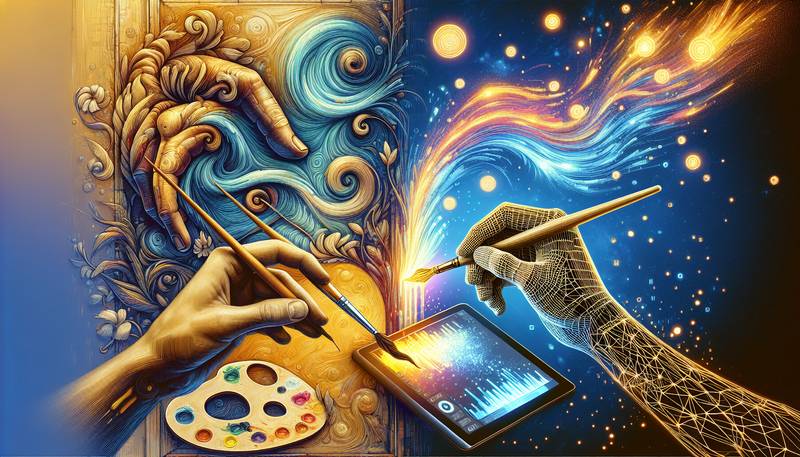NFTs Explained: The New Digital Art Revolution

Introduction
Non-fungible tokens, or NFTs, have taken the digital art world by storm. These unique digital assets have captured the attention of artists, collectors, and investors alike. But what exactly are NFTs, and why are they causing such a revolution in the art world? In this article, we'll explore the ins and outs of NFTs and how they're changing the landscape of digital art.
What are NFTs?
NFTs are digital assets that are unique and cannot be replicated. They are stored on a blockchain, which is a decentralized digital ledger that records all transactions. Each NFT has its own unique identifier, which makes it different from any other NFT. This uniqueness is what gives NFTs their value, as they cannot be exchanged for something of equal value like traditional cryptocurrencies such as Bitcoin or Ethereum.
The Rise of NFTs in Digital Art
Artists have been creating digital art for years, but before NFTs, there was no way to truly own and collect digital art. NFTs have changed that by providing a way for artists to sell their work as unique, one-of-a-kind pieces. This has opened up a whole new market for digital art, and it's attracting collectors who are willing to pay top dollar for rare and exclusive pieces.
One of the most famous examples of an NFT is the digital artwork "Everydays: The First 5000 Days" by the artist Beeple. This piece sold for a record-breaking $69.3 million at auction, making it the most expensive NFT ever sold. This sale put NFTs on the map and showed the world that digital art can be just as valuable as traditional art.
How NFTs Work
To understand how NFTs work, it's important to understand how blockchain technology works. Blockchain is a digital ledger that records transactions in a secure and transparent way. When an NFT is created, it is "minted" on the blockchain. This means that the unique identifier of the NFT is recorded on the blockchain, along with the owner's information. This creates a permanent record of ownership that cannot be altered or deleted.
When an NFT is sold, the transaction is recorded on the blockchain, and the new owner's information is added. This creates a chain of ownership that can be easily verified by anyone. This transparency is one of the reasons why NFTs have become so popular, as it provides a level of trust and authenticity that was previously lacking in the digital art world.
The Benefits of NFTs for Artists
NFTs provide several benefits for artists. Firstly, they allow artists to sell their work directly to collectors without the need for a middleman. This means that artists can keep more of the profits from their sales, and they have more control over how their work is sold and distributed.
Secondly, NFTs provide artists with a way to monetize their digital art. Before NFTs, digital art was often seen as less valuable than traditional art because it could be easily copied and shared. NFTs have changed that by making digital art unique and collectible, and this has opened up new revenue streams for artists.
Finally, NFTs provide artists with a way to reach a global audience. Because NFTs are digital, they can be easily bought and sold online, and this has allowed artists to connect with collectors from all over the world.
The Challenges of NFTs
While NFTs have many benefits, they also come with their own set of challenges. One of the biggest challenges is the environmental impact of NFTs. Because NFTs are stored on a blockchain, they require a significant amount of energy to create and maintain. This has raised concerns about the carbon footprint of NFTs and has led some artists to look for more sustainable alternatives.
Another challenge is the volatility of the NFT market. Because NFTs are still a relatively new concept, their value can fluctuate wildly. This can be both a blessing and a curse for artists and collectors, as it can lead to big profits, but it can also lead to big losses.
Finally, there's the issue of copyright and intellectual property rights. Because NFTs are digital, they can be easily copied and shared, and this has raised questions about who owns the rights to the artwork. Artists and collectors need to be aware of these issues and take steps to protect their rights.
Conclusion
NFTs are changing the digital art world in a big way. They provide a new way for artists to sell their work and for collectors to own unique, one-of-a-kind pieces. While there are challenges to overcome, the potential of NFTs is immense. As the technology continues to develop, we can expect to see even more innovation and growth in the world of digital art.


